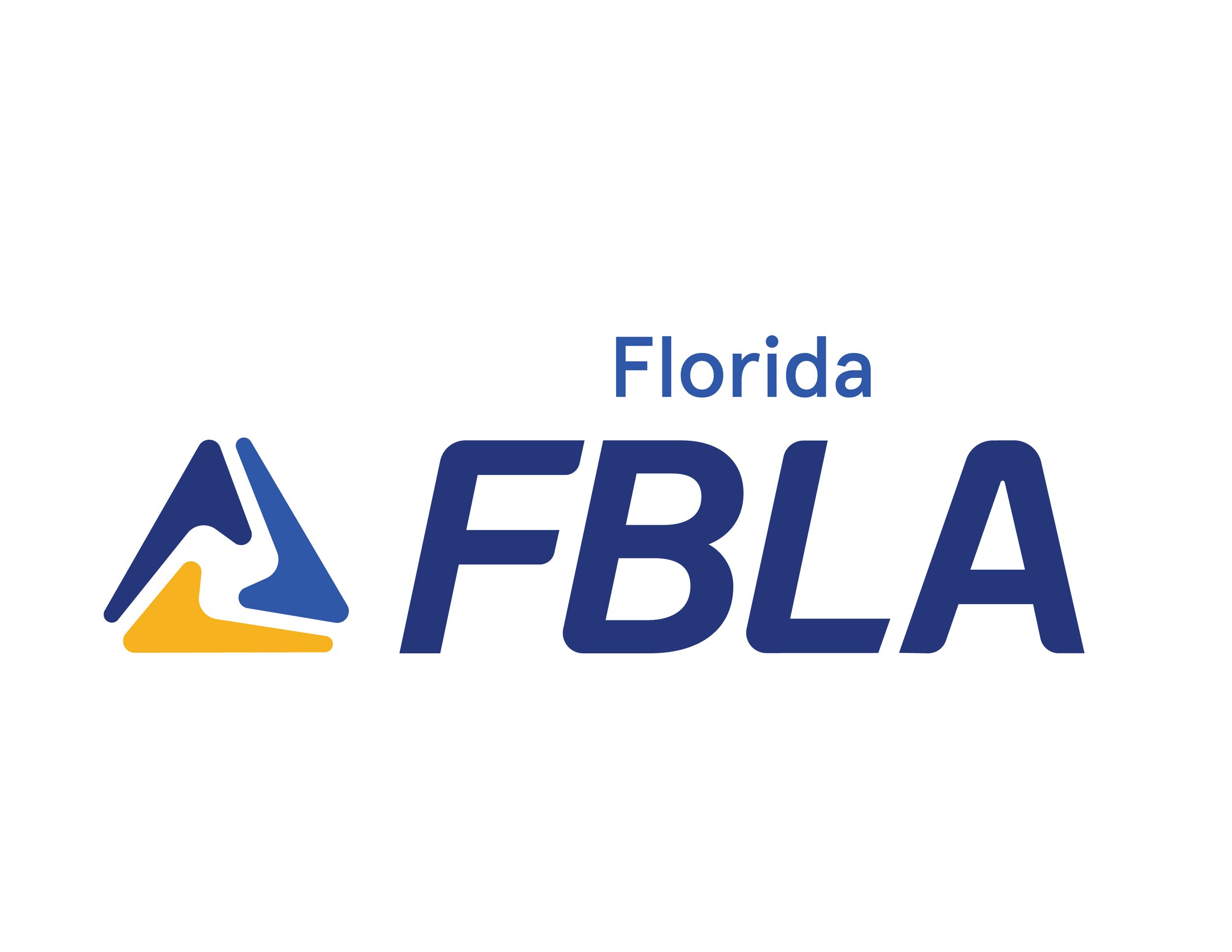JOURNALISM
Journalism provides members with the opportunity to demonstrate knowledge around competencies in the area of journalism. This competitive event consists of an objective test. It aims to inspire members to learn about the economics and business of journalism.
Event Overview
Division: High School
Event Type: Individual
Event Category: Objective Test, 100-multiple choice questions (breakdown of question by competencies below)
Objective Test Time: 50 minutes
NACE Connections: Career & Self-Development
Equipment Competitor Must Provide: Sharpened pencil, Conference-provided nametag, Attire that meets the Florida FBLA Dress Code
Objective Test Competencies
· Economics and Business of Journalism
· Grammar & Format
· Law and Ethics
· Basic Journalism Principles
· History of Journalism
District
Check with your District leadership for District-specific competition information.
State
Eligibility
· FBLA membership dues are paid by 11:59 pm Eastern Time on December 1 (or earlier date specified by District Director) of the current program year.
· Members may compete in an event at the State Leadership Conference (SLC) more than once if they have not previously placed in the top 10 of that event at the National Leadership Conference (NLC). If a member places in the top 10 of an event at the NLC, they are no longer eligible to compete in that event.
· Members must be registered for the SLC and pay the state conference registration fee in order to participate in competitive events.
· Members must stay in an official FBLA hotel to be eligible to compete.
· Each district may be represented by participant(s) based on the Florida FBLA scaled quota system found on the Florida FBLA website.
· Each member can only compete in one individual/team event and one chapter event (American Enterprise Project, Community Service Project, Local Chapter Annual Business Report, Partnership with Business Project).
· If competitors are late for an objective test, they may be either disqualified or permitted to begin late with no extension of the time as scheduled.
· Participants must adhere to the Florida FBLA dress code established by the Florida Board of Directors or they will not be permitted to participate in the competitive event.
Recognition
· The number of competitors will determine the number of winners. The maximum number of winners for each competitive event is 5.
Event Administration
· This event is an objective test administered at the SLC.
· No reference or study materials may be brought to the testing site.
· No calculators may be brought into the testing site.
Tie Breaker
· Ties are broken by comparing the correct number of answers to the last 10 questions on the test. If a tie remains, answers to the last 20 questions on the test will be reviewed to determine the winner. If a tie remains, the competitor who completed the test in a shorter amount of time will place higher.
Americans with Disabilities Act (ADA)
· FBLA meets the criteria specified in the Americans with Disabilities Act for all competitors with accommodations submitted through the conference registration system by the registration deadline.
Penalty Points
· Competitors may be disqualified if they violate the Competitive Event Guidelines or the Honor Code.
Electronic Devices
· All electronic devices such as cell phones, headphones, and watches of any type are not to be brought to the testing site.
National
Be sure to see the National guidelines at https://www.fbla.org/divisions/fbla/fbla-competitive-events/
Study Guide: Competencies and Tasks
A. Economics and Business of Journalism
1. Identify the major funding sources that impact journalism, journalists, and publications.
2. Examine the economic impacts of social media on the journalism industry.
3. Identify the funding sources that allow for publications and news reporting.
4. Identify the education needed for different careers in journalism.
5. Understand the ranking structure and hierarchy of a journalistic environment.
6. Identify the potential salary opportunities for careers in journalism.
7. Identify the major funding sources for journalism.
8. Identify the major expenses for journalism.
9. Examine the economic impacts of digital and social media on the journalism industry.
B. Grammar & Format
1. Identify perspectives and how they are used in journalism.
2. Understand different types of abbreviations and how they are used correctly.
3. Understand what type of formats are used in different media sources.
4. Understand media terminology such as alliteration, onomatopoeia, simile, metaphor.
C. Law and Ethics
1. Identify major laws that impact journalism.
2. Understand the ethical boundaries most important to journalists, specifically when it relates to sources and sharing of information.
3. Understand the impacts of ethical decisions made by journalists on society and the individuals involved.
4. Identify major historical events related to journalism ethics.
D. Basic Journalism Principles
1. Define journalism.
2. Understand common principles that determine newsworthiness of an item.
3. Explain how news values remain true year over year, regardless of societal changes.
4. Explain the basic questions used in news gathering.
5. Define the role of sources in journalism.
6. Understand how strong leads define a story.
E. History of Journalism
1. Explain the constitutional amendments as they relate to the practice of journalism.
2. Identify the major players in the history of journalism and what role they played in the industry.
3. Explain the role of journalists in war and battle.
4. Understand the history of the major players in the journalism industry and the impacts they have had.
5. Understand timelines and transitions in style, medium, and circulation of different types of publications.
6. Identify and understand different awards presented in journalism, including major recipients and milestones in the industry related to these awards.
